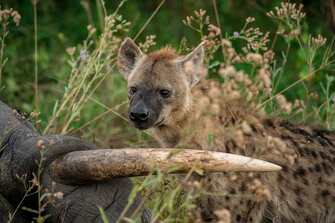
Hunting Modes and Habitat Domains: Quantifying the Effects of Human Predation on Multi-Predator-Prey Interactions
The nature and strength of human-wildlife interactions are often landscape contingent, requiring new theoretical and empirical approaches for establishing generalizable predictability. Through the scaling of risk effects research from the laboratory to the landscape level, this study aims to experimentally quantify the non-consumptive effects of human predation, via subsistence poaching, on multi-species interactions. This project will be carried out through the novel application and testing of the habitat domain theory in Murchison Falls National Park, Uganda.
Habitat domains depict the extent of space utilized while foraging and are fundamentally shaped by functional traits like hunting and feeding modes. Predicting non-consumptive effects, such as habitat and temporal shifts, and competitive interactions is tightly linked to species’ domain extent and overlap. Thus, quantifying domain extent and assessing overlap between species can aid in predicting community level interactions on a spatially contingent scale. Human predation pressures may modulate such mechanisms, however, changing the nature of interactions including exploitative and interference competition or intraguild predation. How spatially varying anthropogenic pressures alter habitat domains and, in turn, the nature of interspecific interactions requires further testing. Through fine scale movement data collected from Ugandan kob, African lions, and spotted hyenas in areas of high and low poaching pressures this study will reveal the impact of human predation effects on multi-predator-prey systems.




